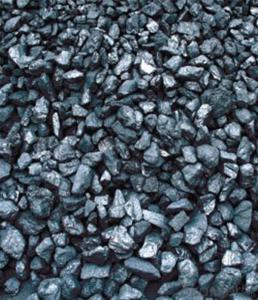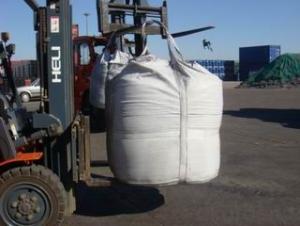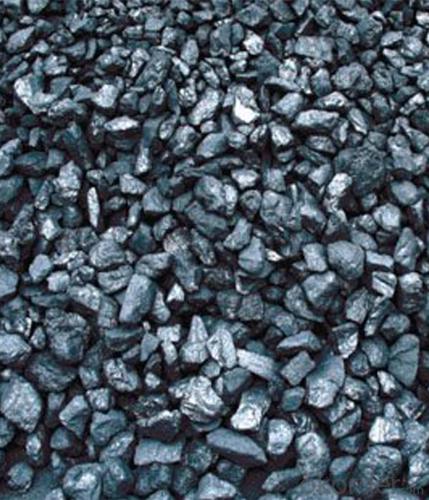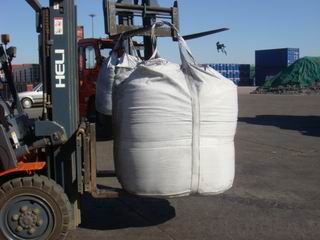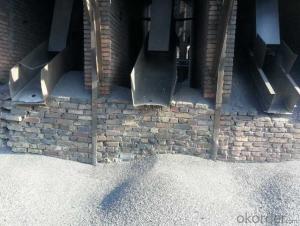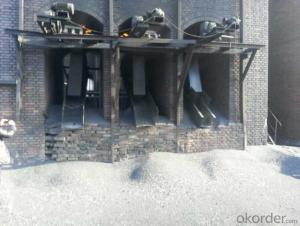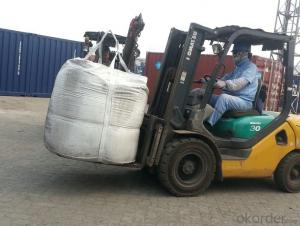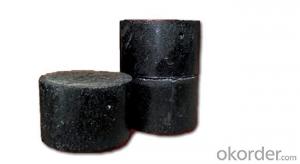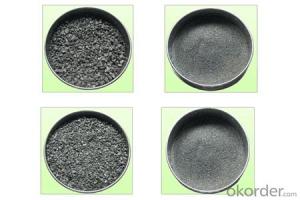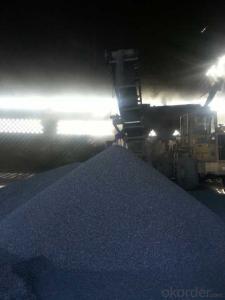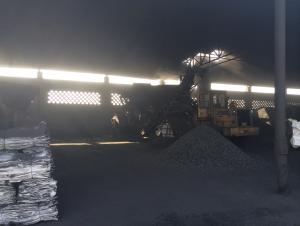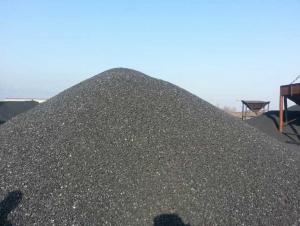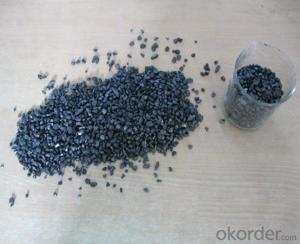FC 93 percent Carbon Additive Supplied By CNBM China
- Loading Port:
- China main port
- Payment Terms:
- TT or LC
- Min Order Qty:
- 30 m.t.
- Supply Capability:
- 1000 m.t./month
OKorder Service Pledge
OKorder Financial Service
You Might Also Like
Specifications
Calcined Anthracite
Fixed carbon: 90%-95%
S: 0.5% max
Size: 0-3. 3-5.3-15 or as request
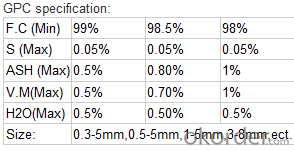
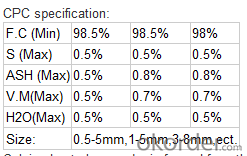
Calcined petroleum coke is formed from the by-product of crude oil distillation. Available in wide ranges of types and morphologies to meet the application,
these materials have a dark, flat sheen. They are high in carbon but have reduced lubrication, electrical
and thermal conductivity properties, and are mainly used as a filler.
PARAMETER UNIT GUARANTEE VALUE | |||||
F.C.% | 95MIN | 94MIN | 93MIN | 92MIN | 90MIN |
ASH % | 4MAX | 5MAX | 6MAX | 7MAX | 8MAX |
V.M.% | 1 MAX | 1MAX | 1.5MAX | 1.5MAX | 1.5MAX |
SULFUR % | 0.5MAX | 0.5MAX | 0.5MAX | 0.5MAX | 0.5MAX |
MOISTURE % | 0.5MAX | 0.5MAX | 0.5MAX | 0.5MAX | 0.5MAX |
Size can be adjusted based on buyer's request.
Pictures of Calcined Anthracite:
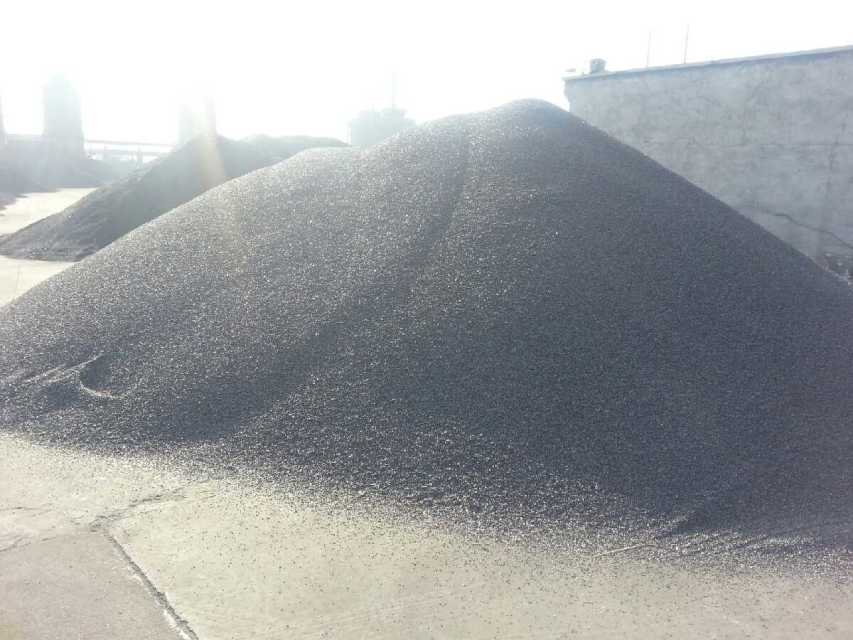
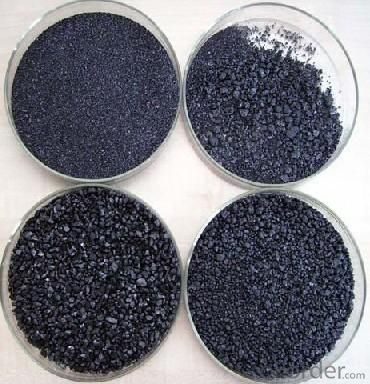
We can supply below furnace charges, please feel free to contact us if you areinterested in any of any of them:
Coke (Metallurgical, foundry, gas)
Calcined Anthracite with fixed carbon from 90% to 95%
Our Service:
1. Your inquiry related to our products or prices will be replied in 24hours.
2. Manufacturer with large capacity, ensure the fast production cycle after confirmed the order.
3. Our professional technicians will answer your entire enquiry in patient.
4. To meet the refractory solutions, we can serve as your instructions.
5. Protection of sales area and private information for our entire customer.
- Q: What are the properties of carbon fibers?
- Carbon fibers possess a range of remarkable attributes, rendering them a distinctive and adaptable material. One noteworthy characteristic is their exceptional strength-to-weight ratio. Carbon fibers exhibit tremendous strength, often surpassing that of steel, while also being significantly lighter. This quality makes them exceptionally well-suited for industries such as aerospace and automotive, where high strength and low weight are essential. Another significant attribute of carbon fibers is their stiffness. They possess a high degree of rigidity, ensuring minimal deformation when subjected to applied loads. This property proves advantageous in applications that require stability and rigidity, such as the construction of sporting goods like tennis rackets or golf clubs. Additionally, carbon fibers display outstanding resistance to chemical corrosion. They exhibit a high level of resistance to the detrimental effects of chemicals or corrosive substances, making them highly suitable for use in harsh environments. Industries such as chemistry or offshore structures prefer carbon fibers due to this property. Furthermore, carbon fibers have a low thermal expansion coefficient, indicating minimal expansion when exposed to heat. This characteristic is vital in applications where thermal stability is crucial, such as the manufacturing of high-temperature components like turbine blades or heat shields. Moreover, carbon fibers possess excellent fatigue resistance, enabling them to endure repeated loading and unloading cycles without significant damage. This attribute is particularly advantageous in applications subjected to cyclic or dynamic stresses, including the construction of sports equipment or aerospace structures. Lastly, carbon fibers exhibit excellent electrical conductivity. They efficiently conduct electricity, making them suitable for applications that require electrical conductivity, such as lightning strike protection in the aerospace industry or the production of electronic devices. In summary, the high strength-to-weight ratio, stiffness, chemical resistance, low thermal expansion, fatigue resistance, and electrical conductivity of carbon fibers establish them as a highly sought-after material in various industries.
- Q: What is the carbon content of different types of soil?
- The carbon content of different types of soil can vary significantly depending on factors such as vegetation cover, climate, and land use. Generally, soils with abundant plant growth and organic matter tend to have higher carbon content. For example, forest soils typically have higher carbon content compared to agricultural or desert soils. Additionally, the carbon content can vary within soil profiles, with surface layers often containing more carbon than deeper layers.
- Q: Why is the solubility of carbon in austenite larger than that in ferrite?
- Ferrite: interstitial solution of carbon formed in alpha Fe.Austenite: interstitial solid solution formed by carbon in gamma Fe.The ferrite structure is a BCC lattice with a gap radius (0.291~0.154). Because of the smaller size of the lattice gap, the solubility of carbon in alpha -Fe is relatively small.
- Q: What is electrical carbon?
- Different uses have different varieties, according to the use of electric carbon varieties can be divided into:(1) sliding contact carbon brushes and carbon sliders for all kinds of motor brushes.(2) various carbon and graphite contacts used in high power switches, relays, etc..(3) with various carbon arc lighting, carbon arc gouging, spectral analysis and arc furnace.(4) all kinds of high purity graphite electrodes, insulation and supporting elements for electric vacuum devices.(5) various electrodes used in dry cells and electrolytic cells.(6) the resistance effect of carbon. Made of various resistance, post, communication with the microphone carbon sand, resistance heating elements etc..
- Q: What is carbon black ink?
- Carbon black ink is a type of ink that is made by dispersing carbon black pigment in a liquid medium. It is commonly used in printing and writing applications due to its deep black color and high opacity.
- Q: How does carbon impact the stability of savannah ecosystems?
- Carbon plays a crucial role in the stability of savannah ecosystems. It is an essential element for all living organisms and is involved in various ecological processes. Carbon is primarily present in the form of organic matter, which is vital for the growth and development of plants, the primary producers in these ecosystems. In savannahs, carbon impacts stability in multiple ways. Firstly, carbon dioxide (CO2) is a key component of the Earth's atmosphere and plays a significant role in regulating the global climate. Savannas are known for their ability to sequester and store large amounts of carbon in their vegetation and soils. This carbon storage helps mitigate climate change by reducing the amount of CO2 in the atmosphere. Furthermore, carbon is essential for plant growth through photosynthesis. Savanna plants, such as grasses and scattered trees, utilize carbon dioxide from the air, converting it into carbohydrates and other organic compounds. This process not only provides plants with energy but also contributes to the overall productivity of the ecosystem. The stability of savannah ecosystems also depends on the interaction between plants and animals. Carbon-rich vegetation serves as a food source for herbivores, such as zebras and antelopes, which in turn support predators like lions and hyenas. The carbon cycle ensures a continuous flow of energy and nutrients throughout the food web, maintaining the balance and stability of the ecosystem. Moreover, the carbon content in savannah soils influences their fertility and ability to retain moisture. Organic matter, derived from decaying plant material, improves soil structure, nutrient availability, and water holding capacity. This, in turn, supports the growth of vegetation and sustains the diverse array of species found in savannah ecosystems. However, human activities, such as deforestation, agricultural practices, and the burning of fossil fuels, are altering the carbon balance in savannahs. Deforestation removes carbon-rich trees and plants, reducing the overall carbon storage capacity of the ecosystem. Additionally, the release of carbon dioxide from the burning of fossil fuels contributes to the greenhouse effect and climate change, which can disrupt the stability of savannah ecosystems. In conclusion, carbon plays a critical role in maintaining the stability of savannah ecosystems. It influences climate regulation, supports plant growth, provides energy for the food web, and enhances soil fertility. However, human activities that disrupt the carbon balance in these ecosystems can have detrimental effects on their stability and overall health. Therefore, efforts to conserve and restore savannah ecosystems are essential for preserving their carbon storage capacity and ensuring their long-term stability.
- Q: What are the properties of carbon nanotubes?
- Carbon nanotubes are cylindrical structures made entirely of carbon atoms. They have a unique set of properties that make them highly desirable in various fields of science and technology. Some of the key properties of carbon nanotubes include: 1. Exceptional strength and stiffness: Carbon nanotubes have an incredibly high strength-to-weight ratio, making them one of the strongest materials known to date. They are about 100 times stronger than steel but much lighter. This property makes them suitable for applications requiring lightweight but strong materials. 2. High electrical conductivity: Carbon nanotubes possess excellent electrical conductivity, allowing them to efficiently carry electrical current. They can be utilized as conductive components in various electronic devices, such as transistors, sensors, and energy storage systems. 3. Thermal conductivity: Carbon nanotubes exhibit high thermal conductivity, meaning they can efficiently conduct heat. This property makes them ideal for applications requiring efficient heat dissipation, such as thermal management in electronic devices. 4. Flexibility and resilience: Carbon nanotubes are highly flexible and can withstand significant deformation without breaking. They can be bent and twisted without losing their structural integrity, making them suitable for applications requiring flexibility, such as flexible electronics. 5. Unique optical and mechanical properties: Carbon nanotubes possess unique optical properties that vary depending on their structure and arrangement. They can absorb and emit light across a wide range of wavelengths, making them useful in applications like photodetectors and solar cells. Additionally, their mechanical properties, such as the ability to deform elastically, make them useful in applications requiring shock absorption and impact resistance. 6. Chemical stability: Carbon nanotubes are highly chemically stable, which means they can resist degradation or corrosion when exposed to various chemical environments. This property makes them suitable for applications in harsh conditions or as protective coatings. 7. Large aspect ratio: Carbon nanotubes have a high aspect ratio, with lengths often exceeding thousands of times their diameter. This characteristic allows them to form strong and lightweight composite materials when incorporated into a matrix, enhancing the overall strength and stiffness of the composite. Overall, the unique combination of properties exhibited by carbon nanotubes makes them an exciting and versatile material with immense potential for a wide range of applications, including electronics, aerospace, medicine, and energy storage.
- Q: What are the consequences of increased carbon emissions on indigenous communities?
- Increased carbon emissions have significant consequences on indigenous communities. Firstly, these communities often rely on the land and natural resources for their livelihoods, so environmental degradation caused by carbon emissions can directly impact their ability to hunt, fish, and gather food. Additionally, climate change resulting from carbon emissions leads to more frequent and intense natural disasters, such as hurricanes and droughts, which can destroy homes and infrastructure in indigenous communities. Moreover, the loss of traditional knowledge and cultural practices associated with the changing environment can have profound social and psychological impacts on indigenous peoples. Overall, increased carbon emissions exacerbate existing inequalities and vulnerabilities faced by indigenous communities, threatening their way of life, well-being, and resilience.
- Q: What are the impacts of carbon emissions on the stability of islands?
- Carbon emissions have significant impacts on the stability of islands. The primary consequence is the rise in sea levels due to global warming, leading to increased coastal erosion and flooding. Additionally, carbon emissions contribute to ocean acidification, threatening marine ecosystems that islands heavily depend on for livelihoods and food security. Moreover, the warming climate intensifies extreme weather events like hurricanes, posing a greater risk to island communities. Overall, carbon emissions destabilize islands both environmentally and economically, making them highly vulnerable to the impacts of climate change.
- Q: What is the difference between carbon nanomaterials and nano carbon materials?
- There are three main types of carbon nanomaterials: carbon nanotubes, carbon nanofibers, and carbon nanospheres.
Send your message to us
FC 93 percent Carbon Additive Supplied By CNBM China
- Loading Port:
- China main port
- Payment Terms:
- TT or LC
- Min Order Qty:
- 30 m.t.
- Supply Capability:
- 1000 m.t./month
OKorder Service Pledge
OKorder Financial Service
Similar products
Hot products
Hot Searches
